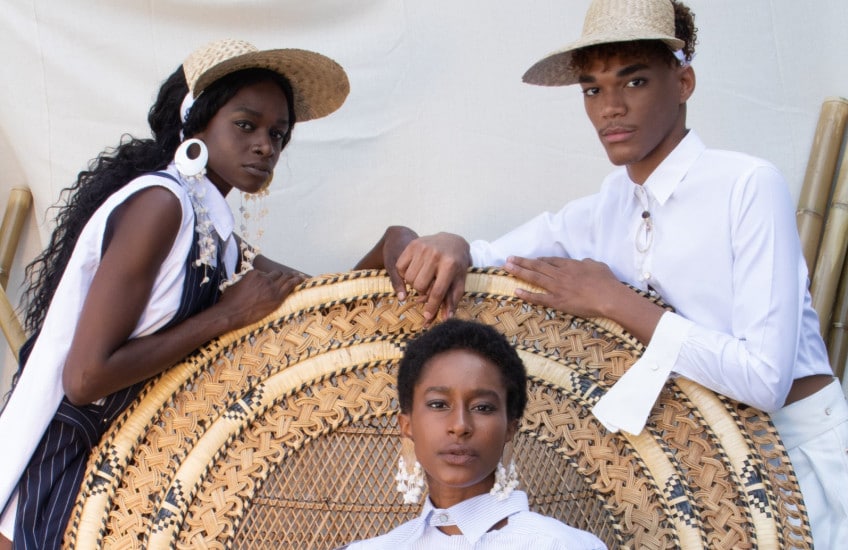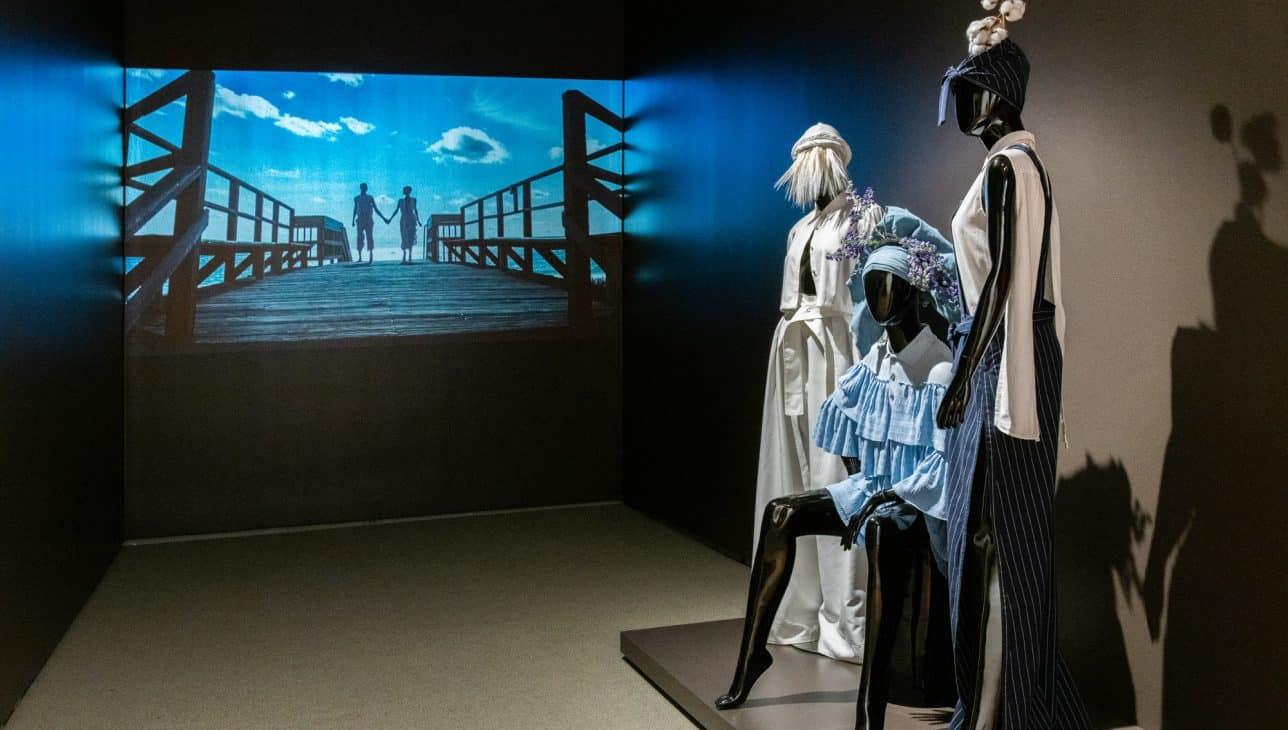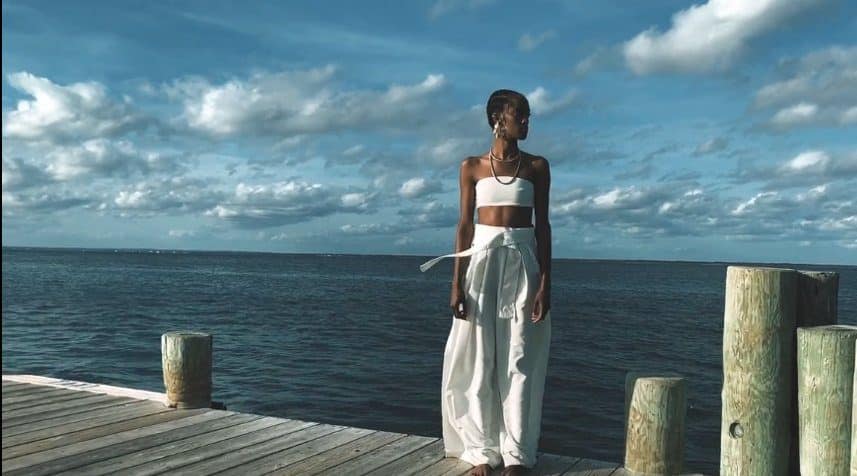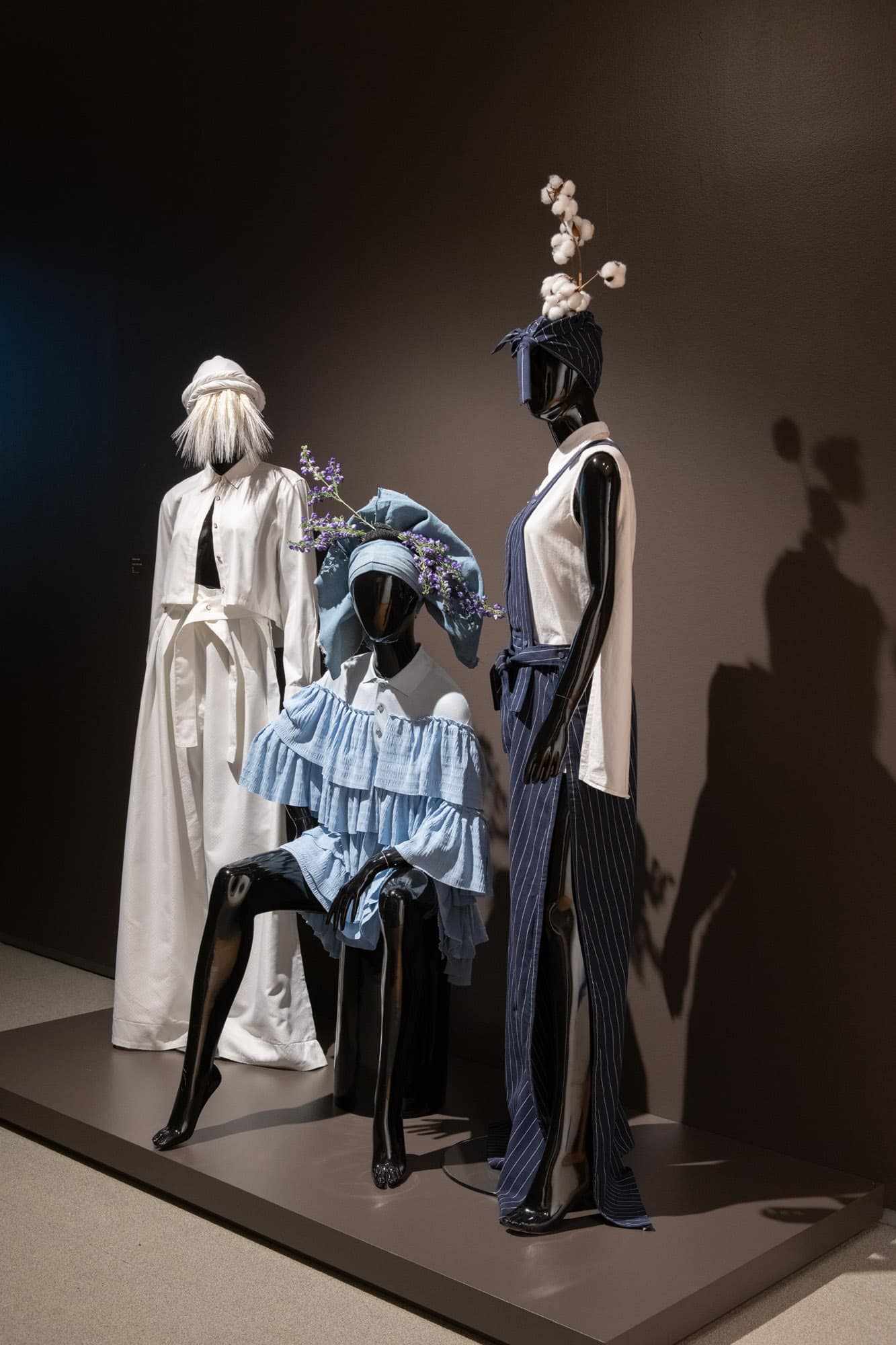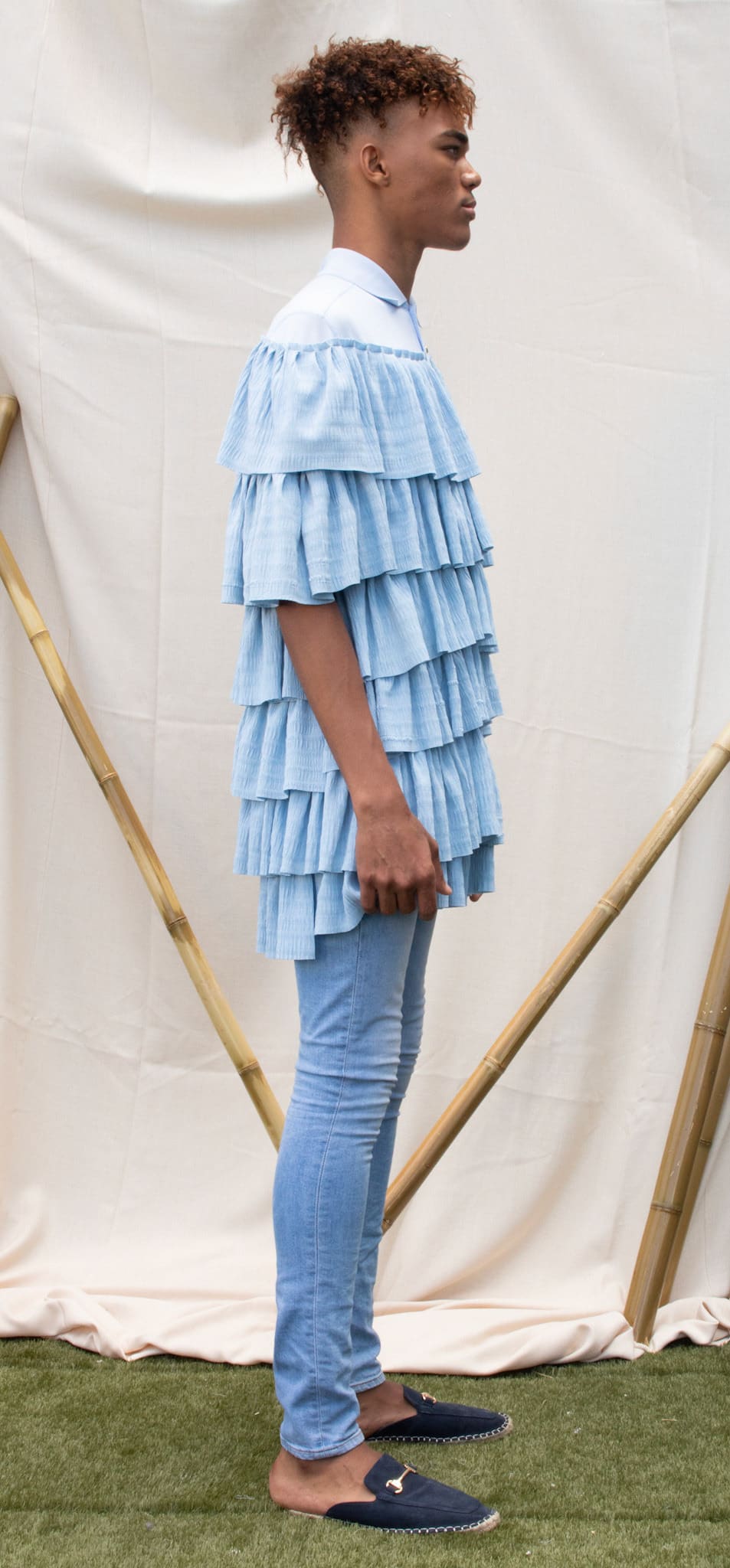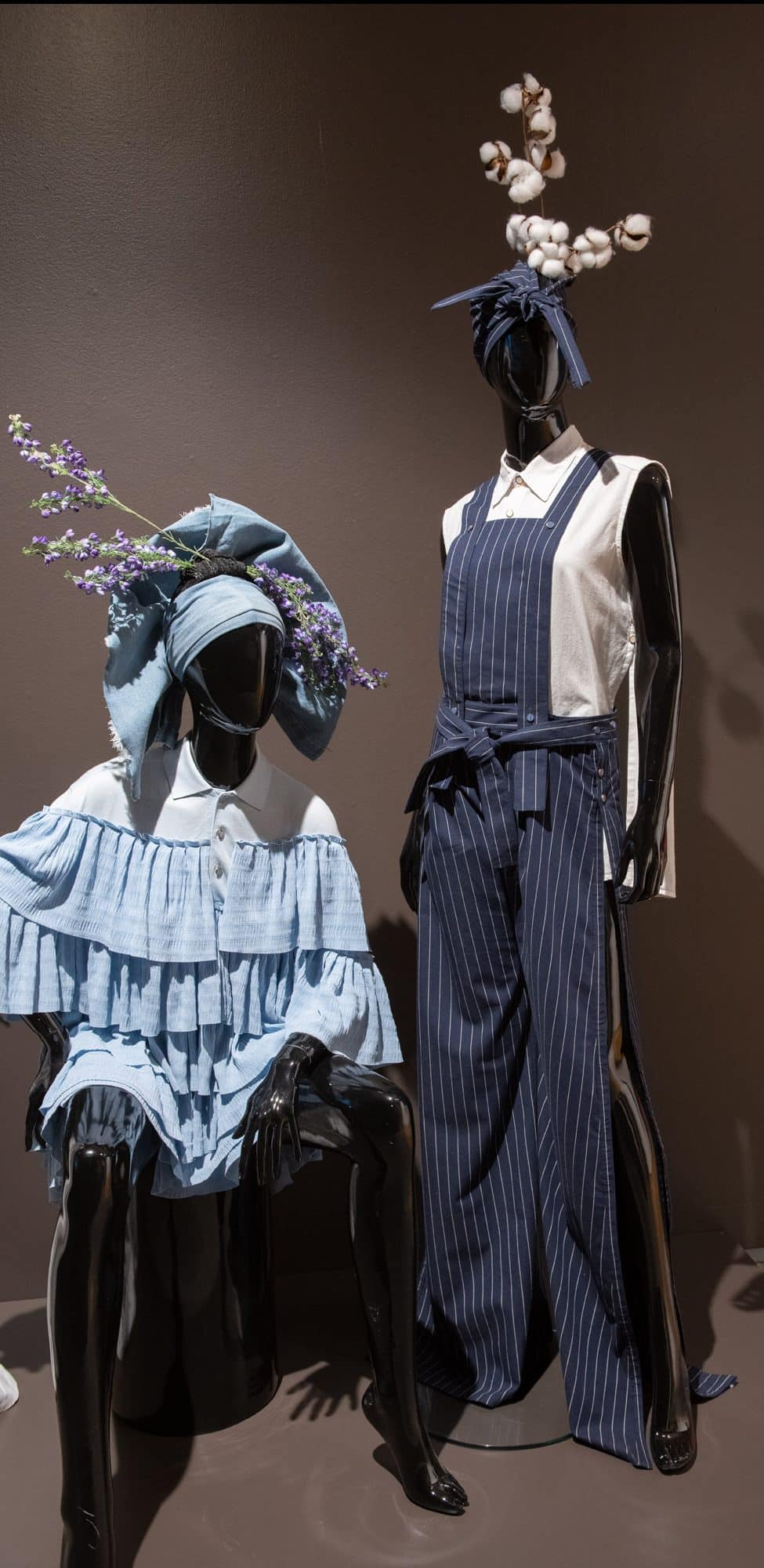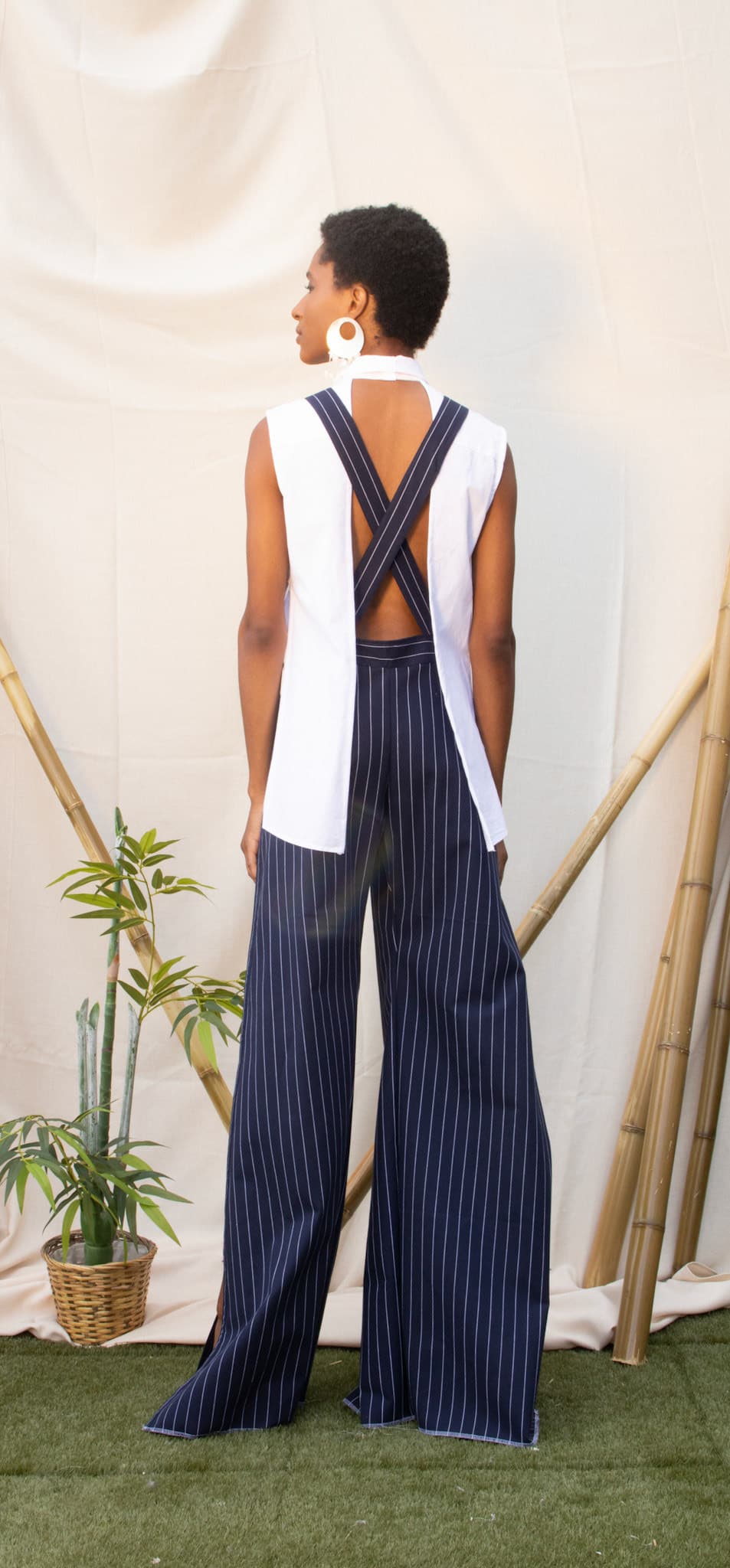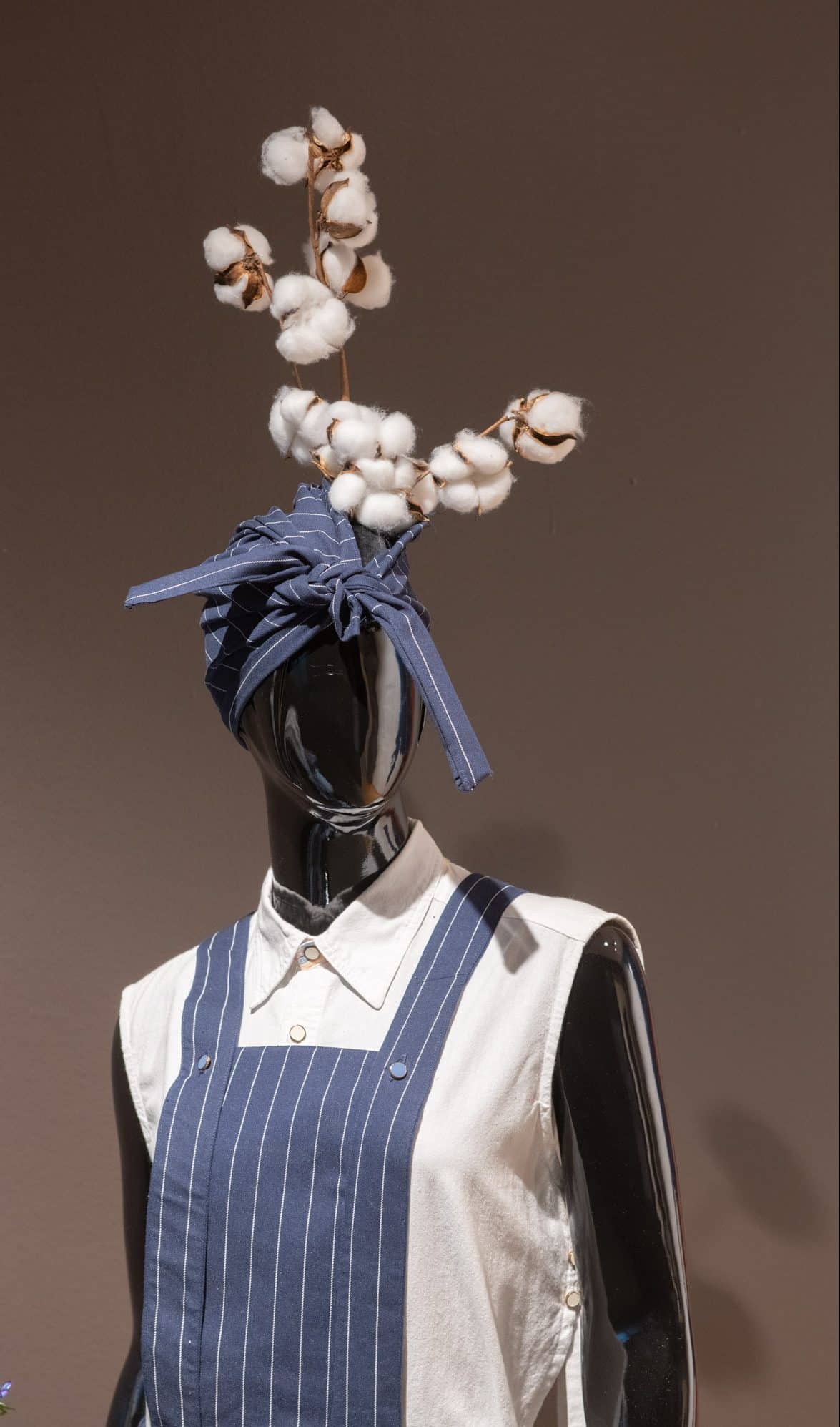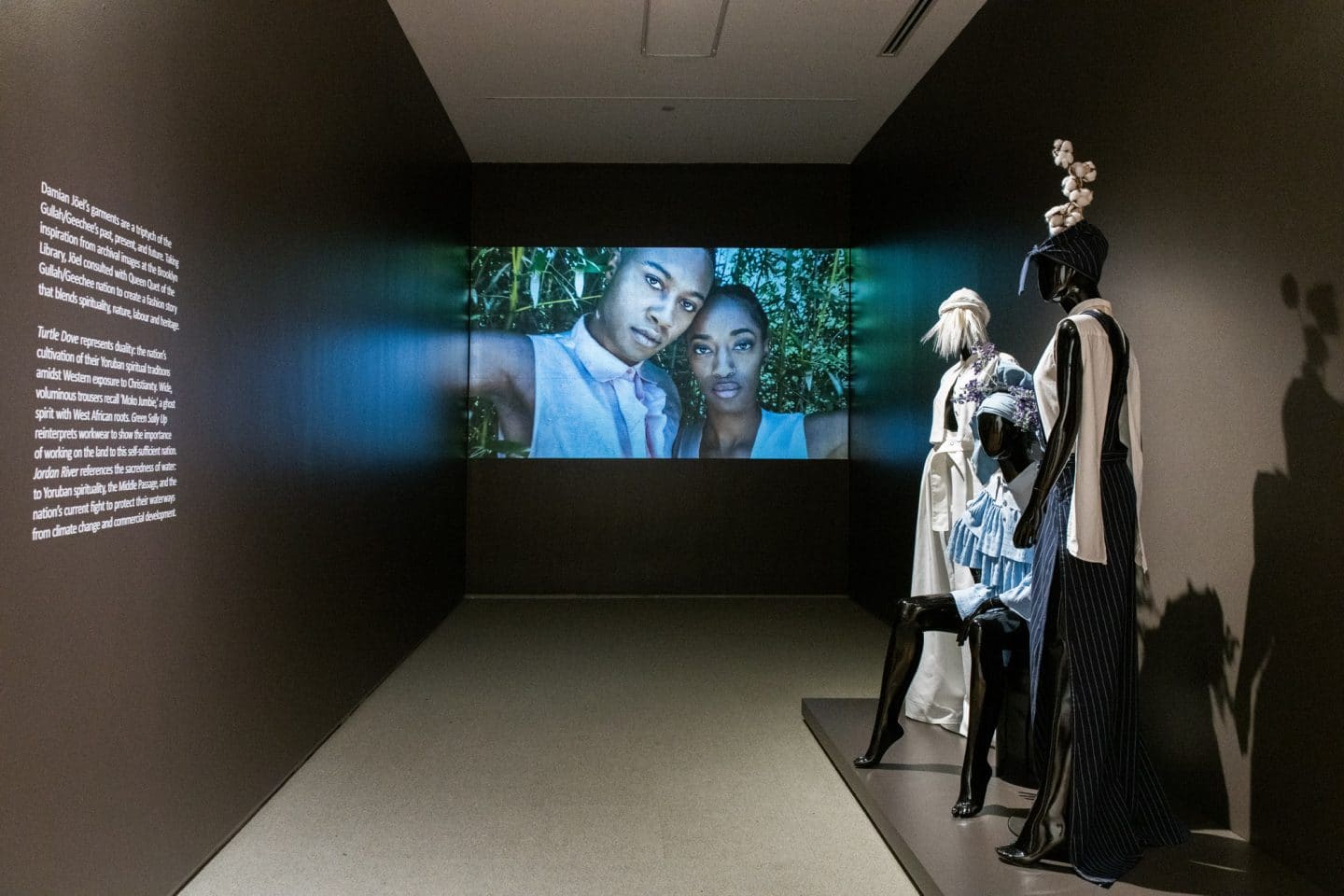INTRO X DJ, Songs of the Gullah Campaign Image, 2020. Courtesy of the artist
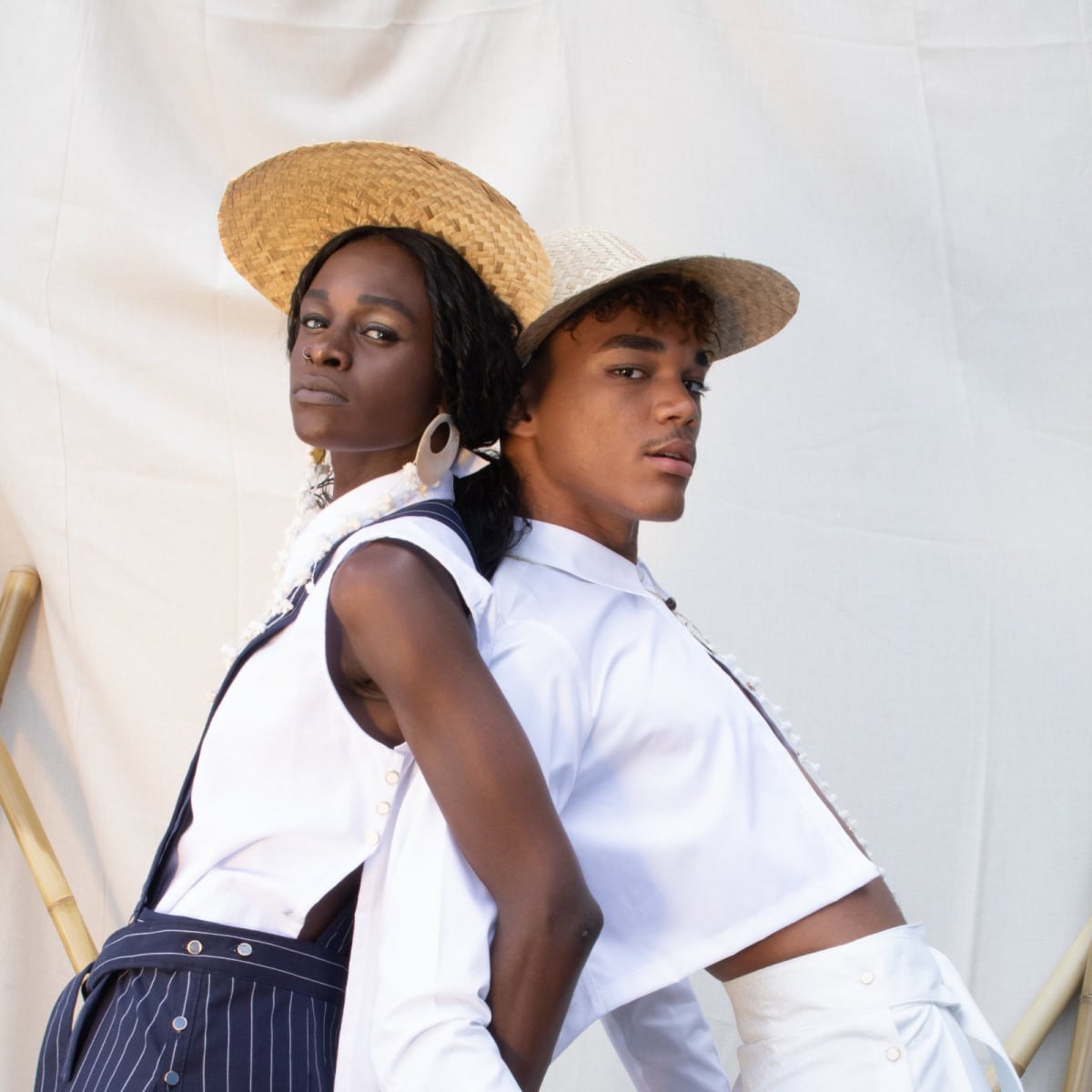
Oral history, archival research, and scientific testing show that the cotton trade relied on Indigenous erasure from fertile land and the enslavement of Africans for labour. Who were some of these people? Where did they come from?
Damian Jöel is a multi-disciplinary artist whose practice fuses fashion storytelling with activism and archival intervention. An immigrant himself, Jöel was drawn to the Gullah/Geechee’s protection of their West African heritage amidst Western assimilation. Jöel’s fashion story, Songs of the Gullah, shares their history through film and genderless garments made of deadstock, upcycled fabric – referencing the nation’s own sustainable methods of living off the land.
Damian Jöel’s garments are a triptych of the Gullah/Geechee’s past, present, and future. Taking inspiration from archival images, Jöel consulted with Queen Quet of the Gullah/Geechee nation to create a fashion story that blends spirituality, nature, labour and heritage.

James F Gibson, Cumberland Landing, Va. Group of “contrabands” at Foller’s house, 1862, stereograph. Photo credit: Civil war photographs, 1861-1865, Library of Congress, Prints and Photographs Division.

Henry P Moore, Slaves of the rebel Genl. Thomas F. Drayton, Hilton Head, South Carolina, 1862, photograph. Photo credit: Library of Congress, Prints and Photographs Division, Alfred Bendiner Memorial Collection.

Turtle Dove represents duality: the nation’s cultivation of their Yoruban spiritual traditions amidst Western exposure to Christianity. Wide, voluminous trousers recall ‘Moko Jumbie,’ a ghost spirit with West African roots.
INTRO X DJ, Songs of the Gullah Campaign Image, Turtle Dove, 2020. Courtesy of the artist.
INTRO X DJ, Songs of the Gullah Campaign Image, Turtle Dove, 2020. Courtesy of the artist.

Turtle Dove represents duality: the nation’s cultivation of their Yoruban spiritual traditions amidst Western exposure to Christianity. Wide, voluminous trousers recall ‘Moko Jumbie,’ a ghost spirit with West African roots.
INTRO X DJ, Songs of the Gullah Campaign Image, Turtle Dove, 2020. Courtesy of the artist.
INTRO X DJ, Songs of the Gullah Campaign Image, Turtle Dove, 2020. Courtesy of the artist.

